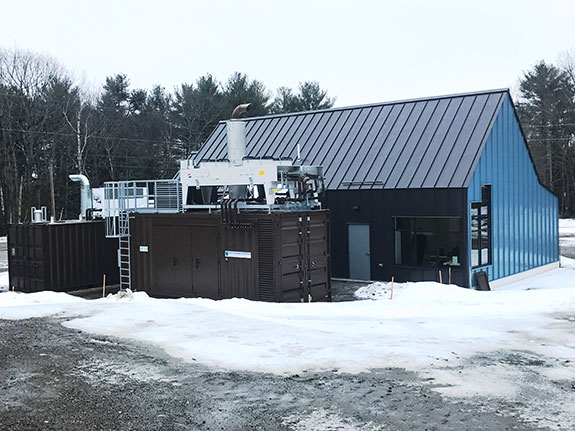ParkerStore 24/7 Emergency Repairs: 774-245-1349
Landfill Biogas Power Generation

Electric Power Generated By Methane
A methane extraction skid was developed and fabricated for a landfill in Maine so the town could recover energy and convert to electric power.
When a municipally-operated landfill in Maine was looking into using the greenhouse gas methane, which is created by decomposing trash, The Hope Group presented an innovative engine/generator system that was scaled to facilitate smaller generator platform needs.
Our in-house design, fabrication capabilities, and technical expertise made us stand out among competitors and helped us win the deal. Previously, we had already successfully developed many complex compressor and hydraulic system skids as well as various VFD controls for compressors and hydraulic pump systems controlled by multiple PLC platforms. Our experts utilized the knowledge mentioned above and created a complex methane extraction and conditioning skid that met all customer requirements and performance expectations in less than eight months. The skid features a combination of gas to gas and air to gas heat exchangers to minimize parasitic loads and increase the efficiency of the system.
Recognizing The Hope Group had limited experience dealing with landfill methane extraction, we partnered with Parker Hannifin to leverage their expertise in the methane recovery market to get the best quality components for the project. The essential conditioning equipment (coalescing filter, glycol-to-gas heat exchanger, water extractor and glycol chiller) were all supplied by Parker.

Capable of operating in extreme temperatures
Being located in Maine, one of the bigger challenges for us was to make sure the skid would work in the extreme weather conditions and not shut down when the temperatures reached as low as -20°F in the winter and over 100°F in the summer. We added an air-to-methane blower to take over the gas conditioning when temperatures would fall too low. This way the chiller could still operate in the cold. Heat trace and insulation were used to prevent water drain lines from freezing. As a part of our efforts to reduce temperatures in the machinery space in the summer, we designed the container to fit multiple roof vents for drawing in outside air. Lastly, we segregated all control panels from the machinery space to ensure electronics did not exceed recommended maximum operating temperature.
Addressed safety and noise concerns
To minimize noise levels and fit residential area requirements, all the equipment was placed in a container with acoustic insulation. This created a unique challenge with regards to the arrangement, fabrication and ultimately maintenance of the equipment. Therefore, we used 3D modeling tools to visualize the project, create subassembly fabrication templates, accurate bills of material and provide detailed configuration requirements to the container manufacturer. After the container was delivered to our shop, we streamlined the equipment fabrication in-house.
The skid is designed and built to accommodate a Class I, Division 2 environment to address the potential presence of methane in the container. For additional employee safety, we added remote methane sensors that would warn personnel if hazardous levels of methane were present.
Looking forward
Agricultural and municipal markets in the US and worldwide could benefit from the same type of solutions. Biogas generators are expected to grow in popularity, especially as fossil fuels become less economical, the renewable sources of energy become more popular, and the importance of reducing greenhouse emissions increases.

